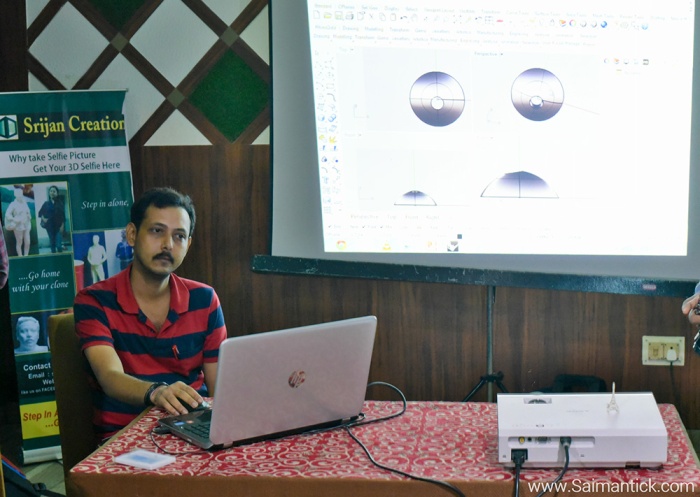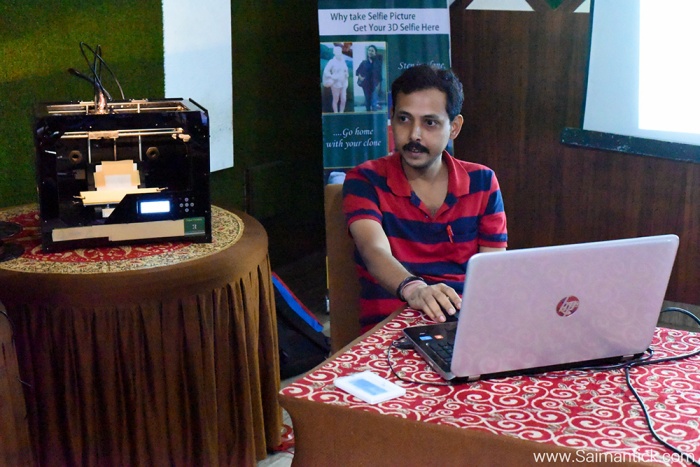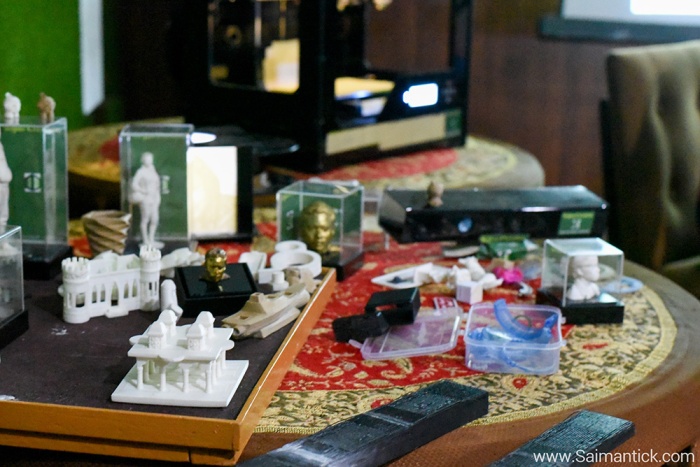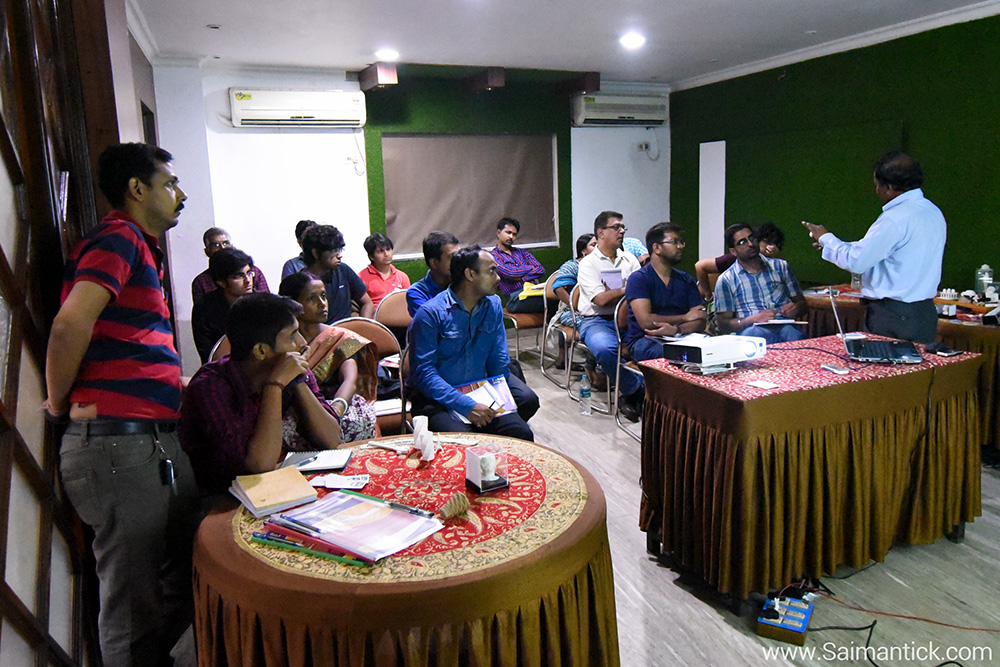Before you read up on this post, Google Srijan Creation.
A workshop was organized and held on the 20th of June by Srijan Creation. Kolkata Bloggers was invited. It was a workshop on 3D printing, and one that delivered a lot of information about the technology.
Materials used
Raw Materials
Polypropylene: It is a type of plastic, rather a thermoplastic. It has both household applications, and commercial and industrial applications.
Softwares used
- Rhino – is a commercial 3D computer graphics and computer-aided design (CAD) software, whose geometry is based on the NURBS mathematical model.
- SketchUp – Initially Google Sketchup, it is a general purpose 3D modelling computer software.
- Sweet Home 3D – As the name suggests, it is a interior designing software.
How does a 3D printer work?
A 2D printer can print on a sheet of paper. Consider the layer of ink that is printed on the paper. Now, suppose layers of ink are being printed on the same sheet, at the exact locations (as the first print). Gradually, the printed region thickens. In a strange way, a 3D ‘object’ is being obtained. However, the ‘height’ of such a printed sheet is negligible.
In a 3D printer, the cartridge moves via the length and breadth. The base however, moves in upward and downward directions. Thus, layer by layer, the depth of the printed material is obtained.
While printing, the cartridge is set to a temperature of 320°C which releases the printing material on to the base. The base is set to a temperature of 180°C. This causes the polypropylene to freeze instantly. Thus, high precision is obtained.

The digital model (which is printed) is created with a 3D scanner or a 3D modelling software.
At the front of the room there were three tables. There was a projector and a laptop on one.

One contained a set of 3D printed models. And on the third table, there was a 3D printer.

The team from Srijan Creation explained to us the applications of 3D printing.
Applications of 3D printing
1. Engineering Prototype
Before making a full working model, it is necessary to make a prototype to check if the machine functions properly. But that can be costly and a lengthy process. 3D printing helps to give an equivalent result, at a much cheaper cost.
2. Miniature Architecture Model
Say, an architect wants to demonstrate his/her idea of a certain building. This is possible with the 3D designing softwares, however, an actual model will help the team, or even the consumer, to understand better.
Let’s keep the word miniature aside. Full sized buildings can now be made with 3D printing.
Here’s a snippet from CNET:
Now, WinSun has further demonstrated the efficacy of its technology — with a five-storey apartment building and a 1,100 square metre (11,840 square foot) villa, complete with decorative elements inside and out, on display at Suzhou Industrial Park.

3. Medical Sector
Check out the latest RoboCop (2014) movie. Gary Oldman plays the role of a medical scientist, who specializes in providing artificial body parts. In science fiction movies, these are easily possible with computer graphics. However, this is no longer fiction!
With 3D printing, it is actually possible to provide bone replacement, synthetic skin, and even organ replacement (to some extent).
The Victoria Hand Project can bring prosthetic hands to patients who lack an upper limb!
This is one of the most important and amazing applications of 3D printing, in which the the printed objects aren’t just models, rather extensions of the human body.

4. Art and Craft
Handcrafted materials have a charm, and such items will never lose their charm. However, think about getting stone etchings, statues, stone art, and what not, with high precision and with almost zero labour (apart from designing the structures in the softwares). 3D printing does the ‘hand crafting’ job for you.
5. Jewellery
Jewellery is something that is already being printed in 3D, in Mumbai itself! These can be delivered to other parts of India as well.
6. Fashion
The fashion industry greatly being benefited by 3D printing. Templates, logos, necklaces, rings – all these can be printed out!
Not just the industry. With the right knowledge, and the proper software and hardware, i.e. a 3D printer (that supports the designs one makes), people can start designing jewellery on their own, while sitting inside their homes! The gap between designing something and implementing it can be bridged.
Here are some 3D printed materials which were present on the day of the workshop:


3D printing originated in Japan, in the 1980s, three decades ago! Now, it is being used in various practical fields. It won’t be wrong if someone said, that within a few more decades, our 2D laser printers will be owned only by collectors.
The developed countries widely use 3D printing. India is catching up extremely fast. Companies like Srijan Creation are doing a wonderful job educating the people.
It was a privilege for Kolkata Bloggers to be a part of such an unique event.
Photograph courtesies go to Saimantick Bhadra. Do check out his photo-blog (click on his name).
